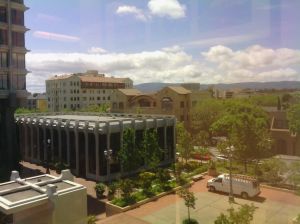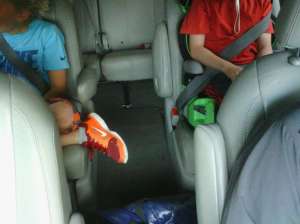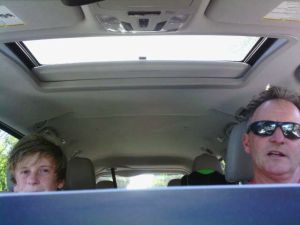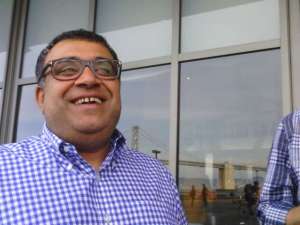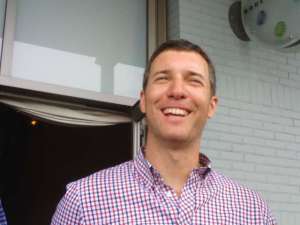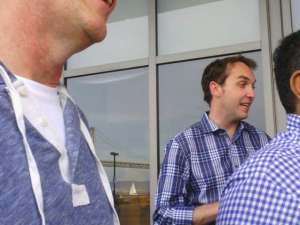Moments, Memories and Narrative—the Power of the Clip
By Jon Callaghan, May 20, 2014
Sometimes the little things mean the most. A quick coffee with a friend, a short walk, a music break to hear a great song. The first steps of a baby, the goofiness of your kids as you drive them to school. Our society and culture seem to celebrate and push us to strive for the big moments (the IPO, the billion dollar exit, the grades, the big product release), but increasingly, to me, it is really the small moments that count in our days.
Though we all likely recognize the power of the little moments to bring us closer to the ones we love and bring us joy, all too often the urgent overcomes us, and we forget the magic of the moment.
Then along comes the Narrative Clip: a small, unobtrusive camera that snaps a picture every 30 seconds.
The Clip experience is one of those rare product experiences that tilts the world a bit and makes you see things you didn’t see before. True invested in Narrative last year, but it wasn’t until last week that I unboxed my first Clip and started using it.
Here’s how it works: the clip takes a picture every 30 seconds—all day long. You sync it via micro-USB cable to your computer, and then the photos are uploaded to a server, where the Narrative software does its magic (more on that later and on their website). Photos automatically appear in the Narrative app on your smartphone, where they are organized into a series of “moments”—clusters of photos from a part of your day.
The Clip software does lots of analysis and editing and does a great job of organizing the photos into a sort of chapter-by-chapter look at your day. Not only can you click on any photo and send it, share it or post it, but you can also simply press “play” and have the stream of photos play in a time series—sort of like a time-elapsed look at your day. You can also double-tap the Clip at any time to snap a quick shot, a really cool feature that I’ve used a ton.
I first started using the Clip on myself, clipped to front of my shirt, lapel or belt. I later got creative with the device: attaching it to the brake cable on my bike during my commute to work, above our kitchen table during family dinner, near my table at a restaurant one night, staring out my office window on a cloudy/windy day, on the laces of my running shoe during a long Dish run and even on the dashboard of our minivan as I drove my kids around this past weekend.
Even though some of the pictures weren’t really usable (either because the Clip was aimed wrong or because I was in motion), I experienced something far more profound than the photo quality—I saw my life unfolding in the raw moments of a day. Not the sanitized, reconstructed memories that my brain made, but the actual, JPG version of what happened to me or around me: the light, the texture, the people, and the spaces and places in which I had actually been throughout the day. I also saw movement. The time series of family dinner was especially impactful. Seeing the way my family was laughing, moving and sharing during dinner was huge. I was re-experiencing the day in some kind of vivid, bright, real-time memory, and the experience was powerful.
The Clip made the invisible visible to me.
Scientists have shed enormous light on how the brain stores moments in different places to create a “memory.” As Leonard Mlodinow describes in Subliminal: How Your Unconscious Mind Rules Your Behavior, the brain receives about 11 million bits of input per second, an amount so large that it can’t possibly all be stored. To cope, we compress memories in a highly efficient way, taking a sketch of the moment and saving only the relevant bits of it. When we later recall an experience, the brain reassembles the basics and “fills in” the gaps. The memory gets reconstructed.
One of the great mysteries of the brain is its immense storage capacity and efficiency, and the reconstruction trick is a powerful software tool. But the downside of this process is that our memories get slightly altered each time we remember them. They get frayed and blurred; a tiny bit here, a tiny bit there.
This works just fine until you see the actual images from yesterday, last week or last year, and quickly you feel the powerful emotions of nostalgia and wonder. Go ahead and look back at your high school graduation picture to really remember how cool (or not) those ‘80s shades were. Or look back at pictures from your childhood only to be stunned to see that yes, in fact, your parents were young, hip and cool in their day. We feel the emotion of nostalgia come when memories get confronted with that which really was.
I think this is why the Narrative Clip is so powerful: it gives us a sense of instant and real-time nostalgia. As Chris Anderson, Co-Founder of 3D Robotics, put it when he saw the device, “Wow, every moment is a candid.”
We are drawn to these memories and moments of our lives because I think we all struggle with the tension of making actions meet words, intentions and goals. As modern humans, we all instinctively feel that there is more to living than meeting the deadlines and duties of everyday life. Isn’t there more than checking items off a list and finishing each day exhausted? Meet the deadline, sure, but wouldn’t we all like to do it surrounded by great people, a little bit more humor and, hopefully, a lot more enjoyment? Reaching destinations is great, but we spend much more time on the journey, and I think we all instinctively realize that the ride itself is what counts.
The Clip shows us what we actually do during a day, and it delights us by showing us so many hidden moments of presence and joy. The Clip reminded me of the “being in the moment” moments. It’s a little surprising to think that a tiny device can conjure these moments and bring joy, but it does. I think the Clip revealed one version of happiness: fundamental, in the moment happiness. The images it captures reaffirm something that my good friend Roger Lee often reminds me, that “these are the good old days.”
The power of wearables is to make the invisible visible. To show us what’s really happening around us. The last time I felt this way about a device was Fitbit. Seeing how you actually move during the day, versus what you think, is a profound realization, and Fitbit has motivated the world to move more and remember activity as the key to wellness. Perhaps the Clip’s power is similar. Perhaps through vivid memories and moments, we can become more present, more aware and yes, more happy.



